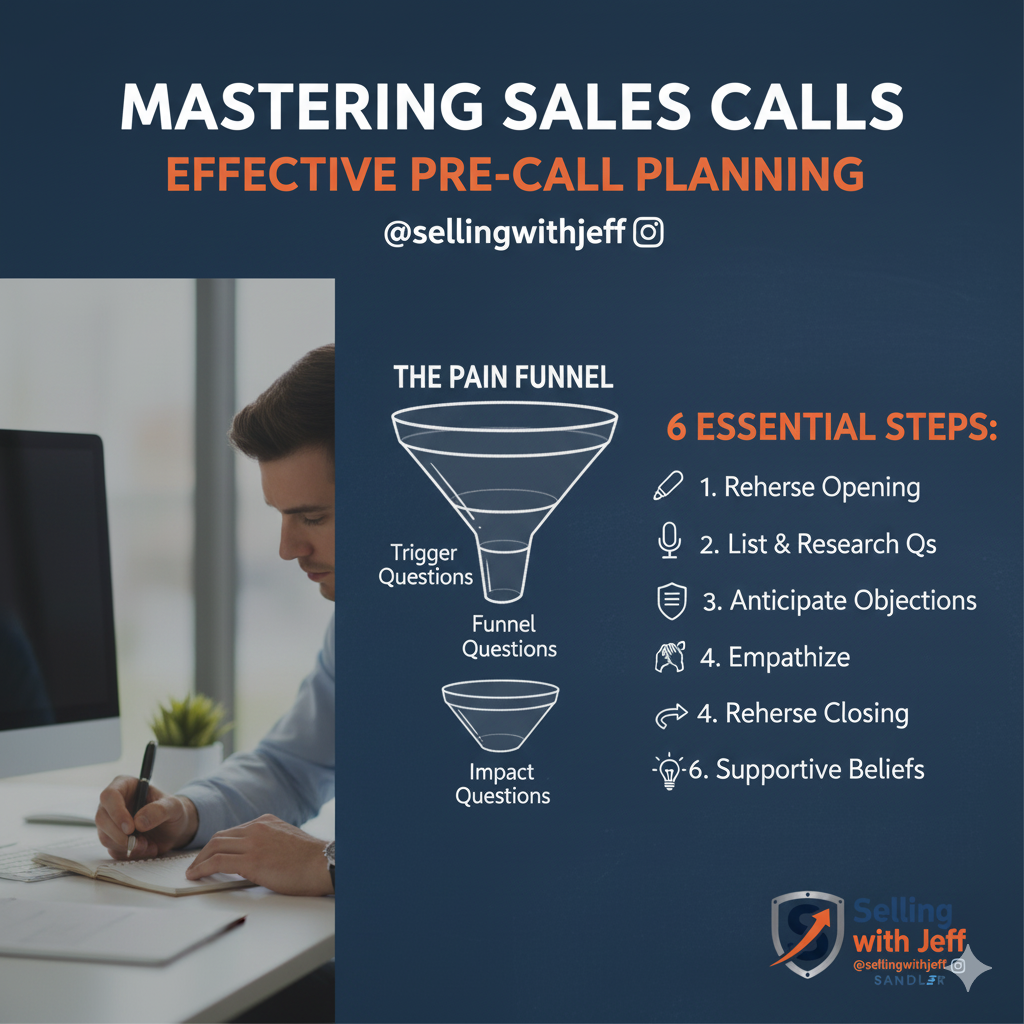Mastering Sales Calls: Effective Pre-Call Planning

The Importance of Pre-Call Planning in Sales
In the competitive world of sales, preparation is key to success. Pre-call planning is a critical component that can significantly enhance your interactions with prospects. By dedicating time to plan and strategize before making a call, sales professionals can ensure they are equipped to handle various scenarios, address client pain points, and steer the conversation towards a successful outcome.
Pre-call planning involves understanding the prospect’s needs, anticipating objections, and setting clear objectives for the call. This proactive approach demonstrates professionalism and builds trust with potential clients. It shows that you value their time and are committed to providing tailored solutions rather than generic pitches.
Six Essential Steps to Prepare for a Sales Call
Effective pre-call planning can be broken down into six essential steps. These steps form the foundation for a structured and successful sales interaction:
-
Rehearse Your Opening PALO: Begin by planning your opening statement or PALO (Pre-Approach, Approach, and Landing Objectives). Determine what you want the prospect to decide by the end of the call, and set an upfront contract to manage expectations.
-
List and Research Questions: Prepare a comprehensive list of questions to ask during the call. These should include referral questions, pain questions, and other queries that will help you understand the prospect's needs. Writing down these questions ensures you don’t forget important points during the conversation.
-
Anticipate Objections: Identify potential objections the prospect might raise and plan your responses. Being prepared for objections helps you address concerns confidently and keeps the conversation on track.
-
Empathize with the Prospect: Put yourself in the prospect's shoes and imagine how your questions and statements will be perceived. Ensure your approach is nurturing and considerate, making the prospect feel understood and valued.
-
Rehearse Your Closing PALO: Visualize a successful outcome and plan how you will close the call. Having a clear closing strategy helps you steer the conversation towards a decision and sets the stage for the next steps.
-
Supportive Beliefs: Reinforce positive beliefs about your approach and the value you bring to the prospect. Remind yourself that your goal is to qualify the prospect and find a mutually beneficial solution, not just to close a sale.
Utilizing the Pain Funnel for Deeper Client Insights
The pain funnel is a powerful tool that helps sales professionals delve deeper into a prospect’s pain points. By asking a series of probing questions, you can uncover the underlying issues that drive the prospect’s needs. This process involves:
- Trigger Questions: Start with general questions to get the prospect talking about their challenges. For example, "What's wrong with what you have now?"
- Funnel Questions: Gradually narrow down the focus with more specific questions such as "How long has it been like this?" and "What have you done to try to fix this?"
- Impact Questions: Explore the impact of these challenges on the prospect's business or personal life. Questions like "How does this affect you and your family?" provide deeper insights into their pain points.
By thoroughly understanding the prospect’s problems, you can tailor your solutions more effectively and demonstrate genuine interest in their well-being.
Handling Objections and Leveraging Supportive Beliefs
Objections are a natural part of the sales process, and handling them effectively is crucial for success. Instead of fearing objections, view them as opportunities to address concerns and build trust. Here’s how:
- Encourage Competitive Comparison: When prospects mention they are considering other options, encourage them to explore and compare. This demonstrates confidence in your offering and helps prospects make informed decisions.
- Ask Probing Questions: Use questions to understand the prospect’s concerns and address them directly. For instance, "What were you going to ask the other builders about warranty?" helps uncover specific worries.
- Leverage Supportive Beliefs: Reinforce your belief in the value you provide. Remind yourself that you are there to qualify prospects and find the best fit, not to push a sale. This mindset helps maintain a professional and confident demeanor.
By integrating these strategies into your sales approach, you can enhance your pre-call planning, build stronger client relationships, and increase your chances of closing successful deals. Remember, preparation is the key to mastering sales calls and achieving consistent results.


